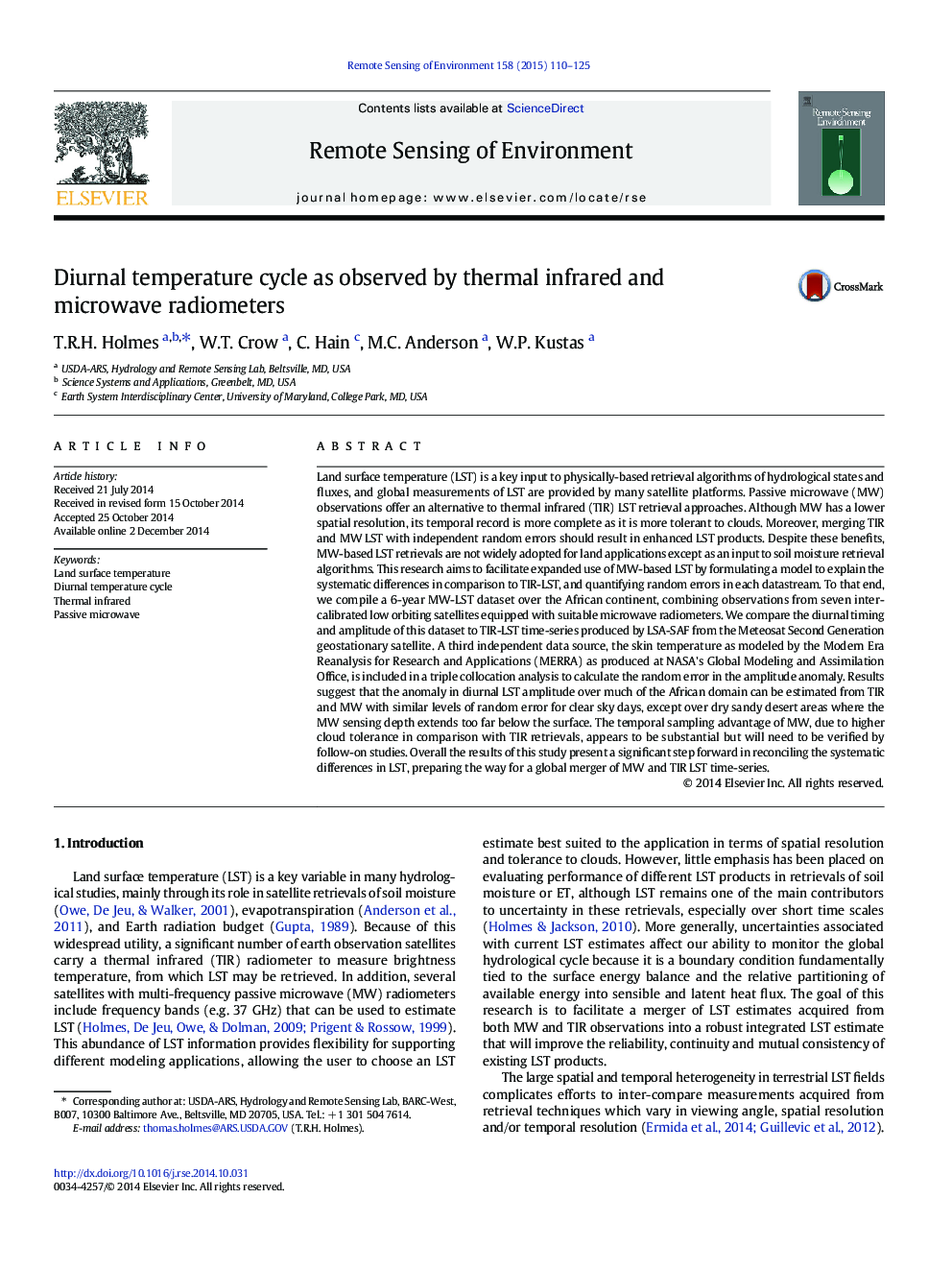| کد مقاله | کد نشریه | سال انتشار | مقاله انگلیسی | نسخه تمام متن |
|---|---|---|---|---|
| 6346226 | 1621242 | 2015 | 16 صفحه PDF | دانلود رایگان |
- Thermal infrared and microwave-based temperature (LST) estimates are reconciled.
- The diurnal amplitude of alternative LST estimates are comparable in terms of precision.
- Merging alternative LST estimates should result in enhanced LST products.
Land surface temperature (LST) is a key input to physically-based retrieval algorithms of hydrological states and fluxes, and global measurements of LST are provided by many satellite platforms. Passive microwave (MW) observations offer an alternative to thermal infrared (TIR) LST retrieval approaches. Although MW has a lower spatial resolution, its temporal record is more complete as it is more tolerant to clouds. Moreover, merging TIR and MW LST with independent random errors should result in enhanced LST products. Despite these benefits, MW-based LST retrievals are not widely adopted for land applications except as an input to soil moisture retrieval algorithms. This research aims to facilitate expanded use of MW-based LST by formulating a model to explain the systematic differences in comparison to TIR-LST, and quantifying random errors in each datastream. To that end, we compile a 6-year MW-LST dataset over the African continent, combining observations from seven inter-calibrated low orbiting satellites equipped with suitable microwave radiometers. We compare the diurnal timing and amplitude of this dataset to TIR-LST time-series produced by LSA-SAF from the Meteosat Second Generation geostationary satellite. A third independent data source, the skin temperature as modeled by the Modern Era Reanalysis for Research and Applications (MERRA) as produced at NASA's Global Modeling and Assimilation Office, is included in a triple collocation analysis to calculate the random error in the amplitude anomaly. Results suggest that the anomaly in diurnal LST amplitude over much of the African domain can be estimated from TIR and MW with similar levels of random error for clear sky days, except over dry sandy desert areas where the MW sensing depth extends too far below the surface. The temporal sampling advantage of MW, due to higher cloud tolerance in comparison with TIR retrievals, appears to be substantial but will need to be verified by follow-on studies. Overall the results of this study present a significant step forward in reconciling the systematic differences in LST, preparing the way for a global merger of MW and TIR LST time-series.
Journal: Remote Sensing of Environment - Volume 158, 1 March 2015, Pages 110-125
